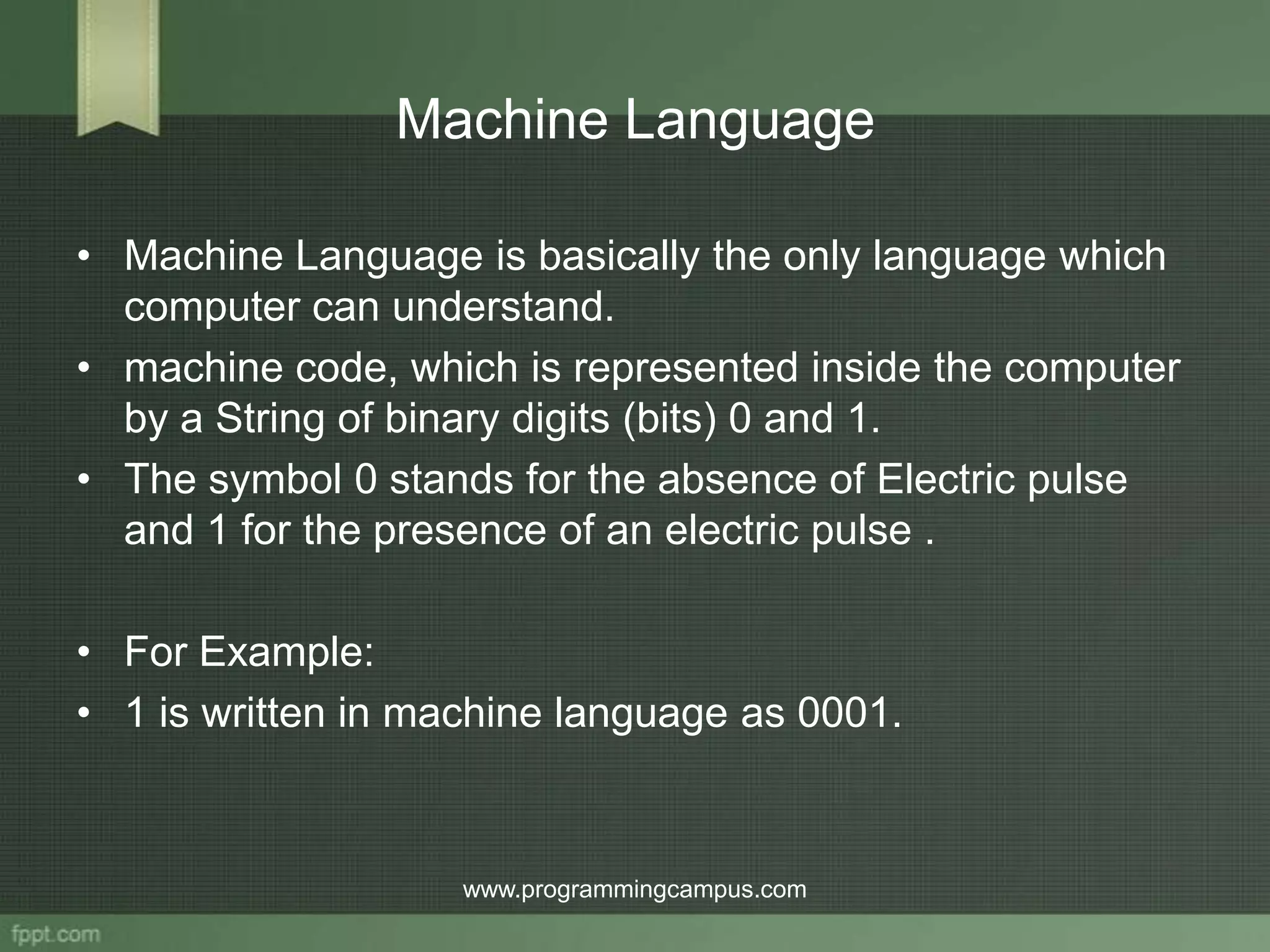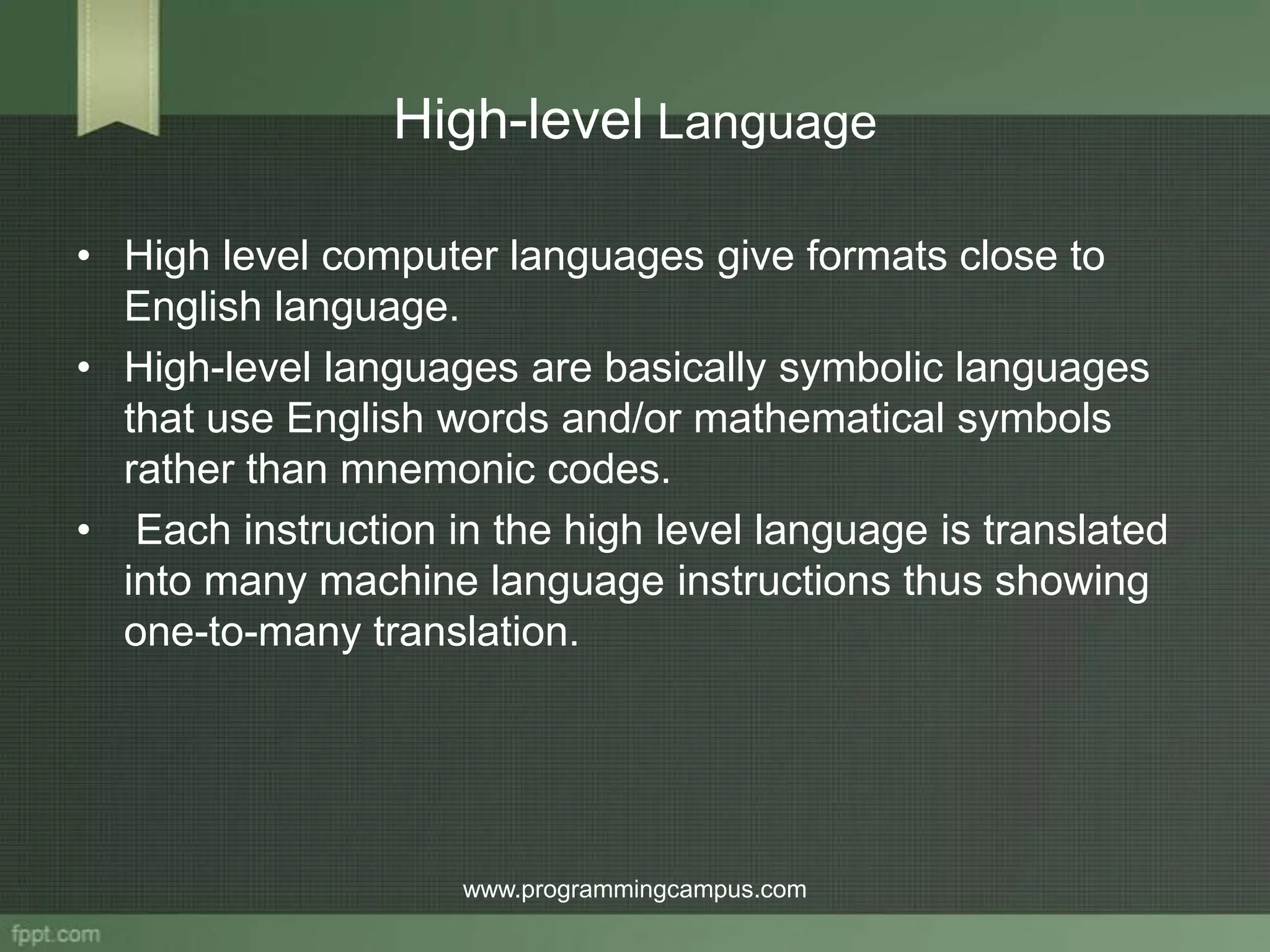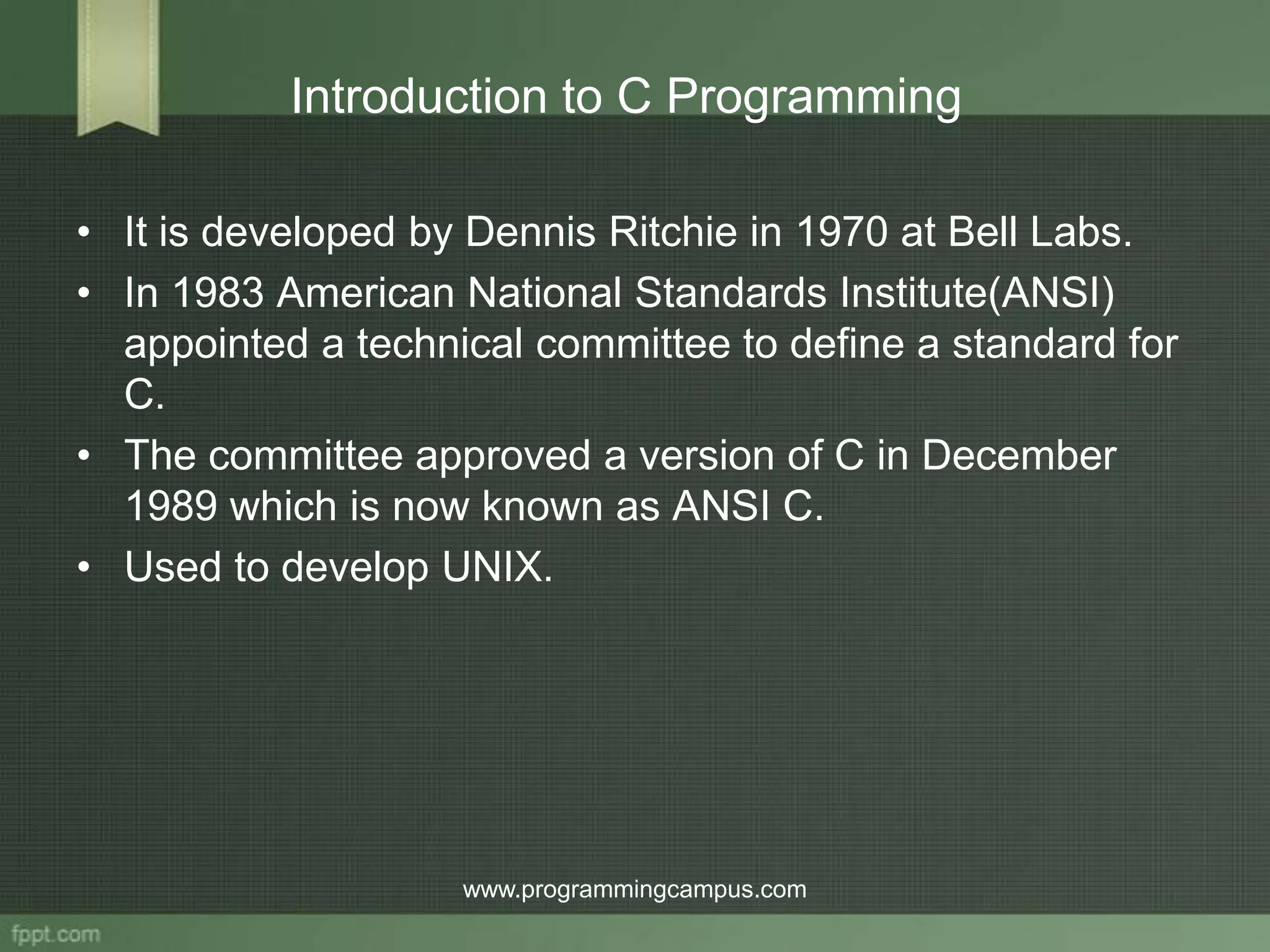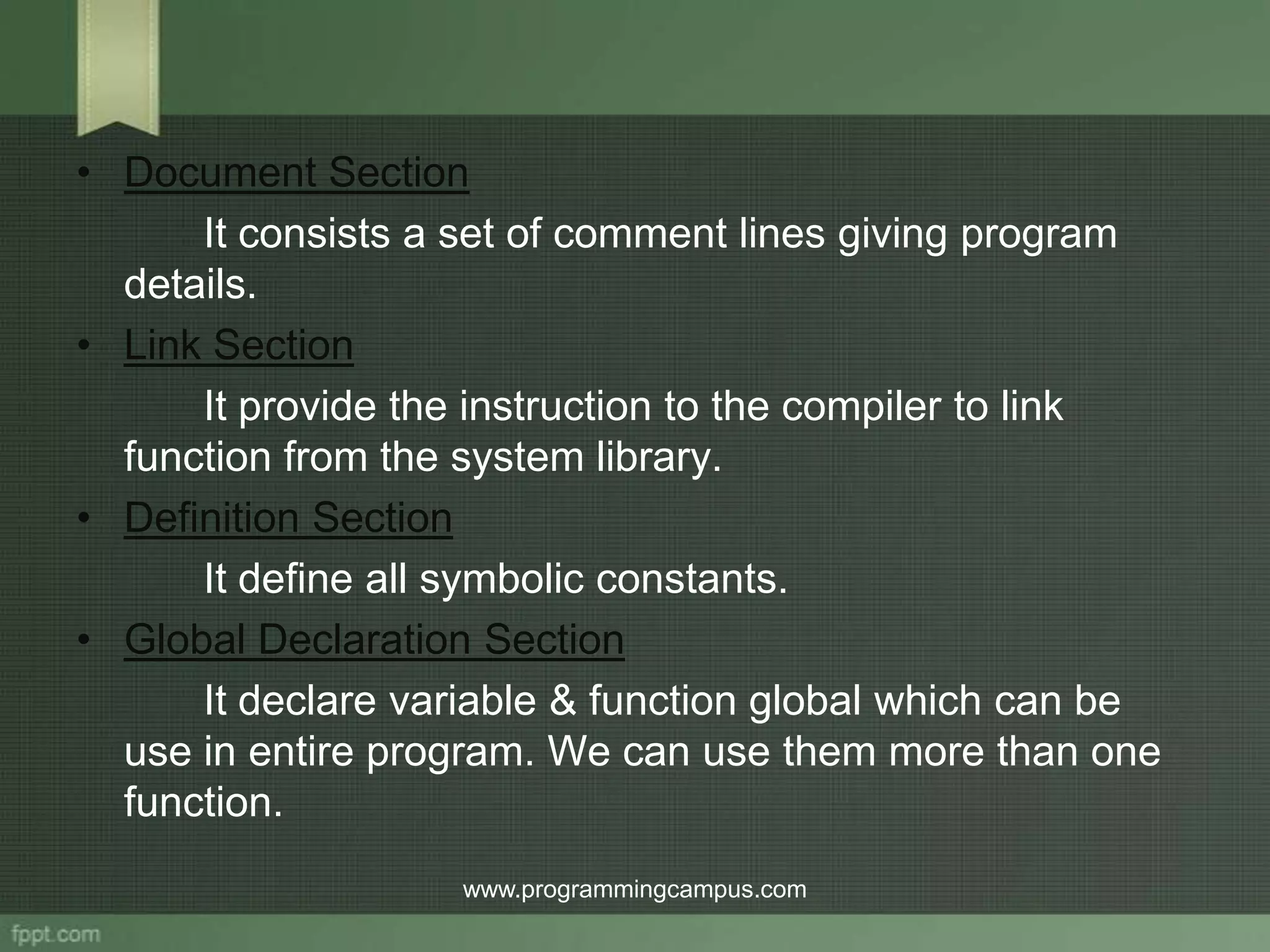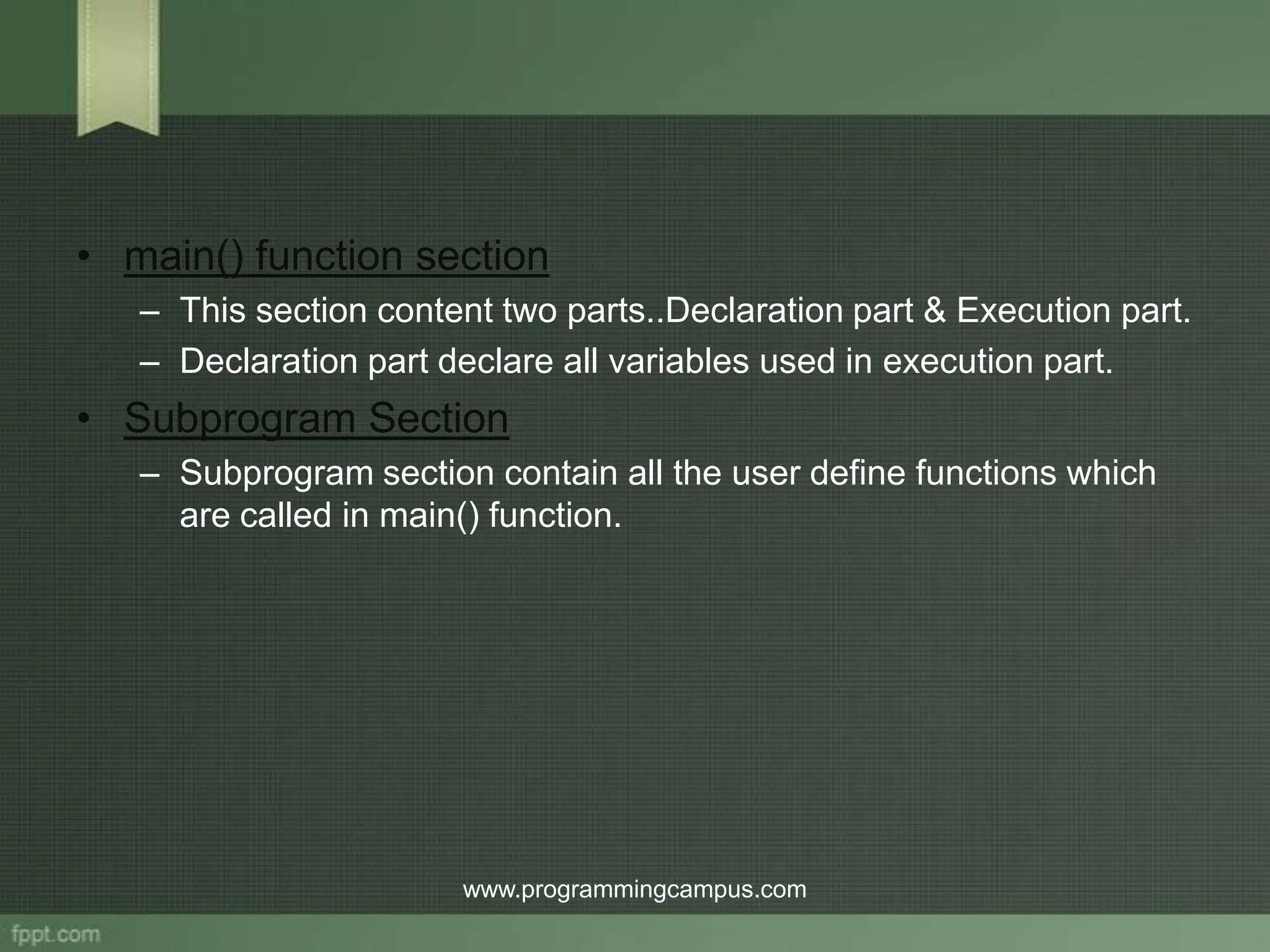This document introduces C programming and provides an overview of programming languages. It discusses that programming languages can be categorized into machine language, assembly language, and high-level languages. C programming is then introduced, including that it was developed in 1970, standardized in 1989, and used to develop UNIX. The basic structure of a C program is outlined including the documentation, link, definition, main, and subprogram sections.



